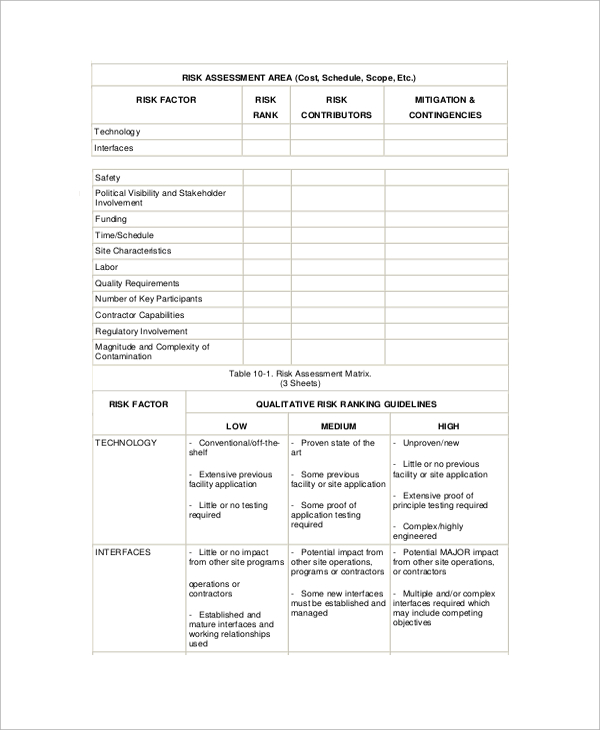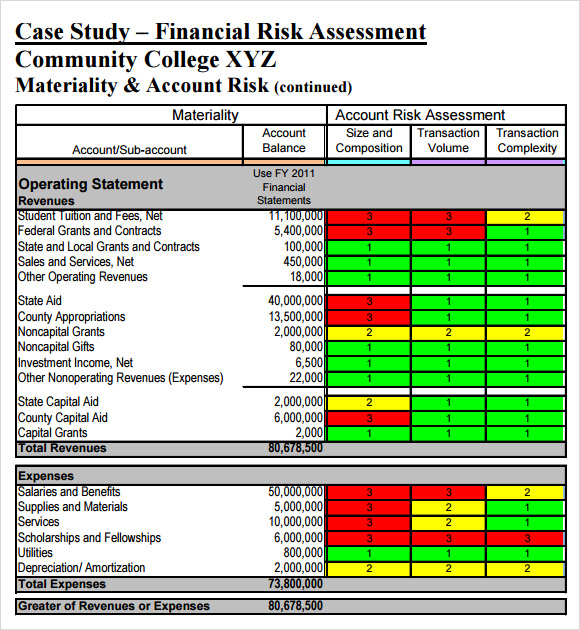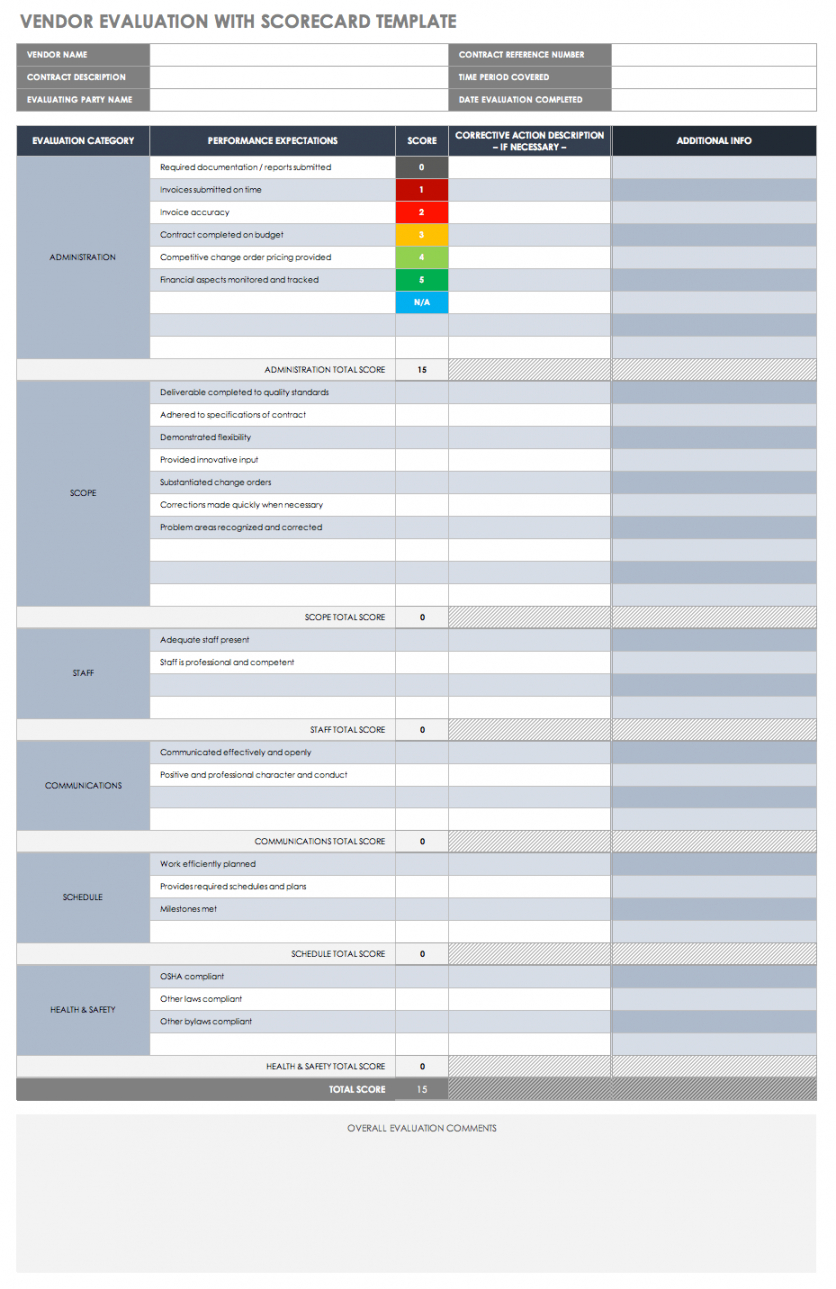
1, Guide for Conducting Risk Assessments.Ī basic formula, risk = likelihood x impact, typically computes a risk value. The document is Special Publication 800-30 Rev. Use our risk assessment template to list and organize potential threats to your organization.Īn excellent document to assist in preparing a risk assessment comes from NIST.

For example, you don't have to plan for earthquakes if USGS maps indicate your site is not in or near an earthquake zone. You can rule out certain events if there is almost no chance of them occurring. These sources can help determine the likelihood of specific events occurring, as well as the severity of actual events. government agencies, such as the Federal Emergency Management Agency, Department of Homeland Security and Department of Energy.experience of vendors doing business with the firm and.experience of key stakeholder organizations.Geological Survey (USGS) maps and other documentation National Weather Service historical data.


A risk assessment will also help determine what steps, if properly implemented, could reduce the severity of an event. This includes potential damage events could cause, the amount of time an organization will need to recover or restore operations, and preventive measures or controls the company can take that can mitigate the likelihood of an event occurring. Risk assessments prepare organizations for the most likely threats, which enables them to shift resources to the risks most likely to strike and avoid unnecessary expenses.Ī risk assessment helps identify events that could adversely affect an organization. Why are risk assessments important?ĭR is an expensive practice, and risk assessments can help keep costs down. Organizations can then customize the included free, downloadable IT risk assessment template to aid their disaster recovery (DR) plan.
#RISK ASSESSMENT PROJECT MANAGEMENT TEMPLATE HOW TO#
Below, find out how to prepare a risk analysis and how to identify and respond to natural and man-made hazards.


 0 kommentar(er)
0 kommentar(er)
